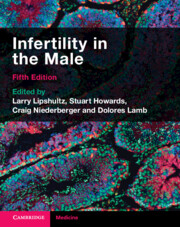Book contents
- Infertility in the Male
- Infertility in the Male
- Copyright page
- Contents
- Contributors
- Foreword
- Abbreviations
- Introduction
- Section 1 Scientific Foundations of Male Infertility
- Section 2 Clinical Evaluation of the Infertile Male
- Section 3 Laboratory Diagnosis of Male Infertility
- Section 4 Treatment of Male Infertility
- Section 5 Health Care Systems and Culture
- Chapter 28 Mental Health and Male Reproduction
- Chapter 29 Legal Issues and Male Reproduction
- Chapter 30 Male Reproduction in the Transgender Patient
- Chapter 31 Global and Cultural Aspects of Male Reproductive Care
- Index
- References
Chapter 31 - Global and Cultural Aspects of Male Reproductive Care
from Section 5 - Health Care Systems and Culture
Published online by Cambridge University Press: 08 July 2023
- Infertility in the Male
- Infertility in the Male
- Copyright page
- Contents
- Contributors
- Foreword
- Abbreviations
- Introduction
- Section 1 Scientific Foundations of Male Infertility
- Section 2 Clinical Evaluation of the Infertile Male
- Section 3 Laboratory Diagnosis of Male Infertility
- Section 4 Treatment of Male Infertility
- Section 5 Health Care Systems and Culture
- Chapter 28 Mental Health and Male Reproduction
- Chapter 29 Legal Issues and Male Reproduction
- Chapter 30 Male Reproduction in the Transgender Patient
- Chapter 31 Global and Cultural Aspects of Male Reproductive Care
- Index
- References
Summary
In developed countries, infertility is generally estimated to occur in 15 percent of married couples, and male factors contribute to about 50 percent of the causes [1]. However, due to a lack of registration, shortage of resources, or other cultural, psychosocial, or religious constraints, the exact prevalence of infertility in developing countries is unknown or underestimated, especially with regard to male factors [2]. The rates are believed to be higher than in developed countries [3].
- Type
- Chapter
- Information
- Infertility in the Male , pp. 534 - 540Publisher: Cambridge University PressPrint publication year: 2023



